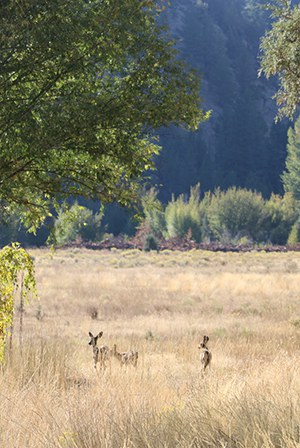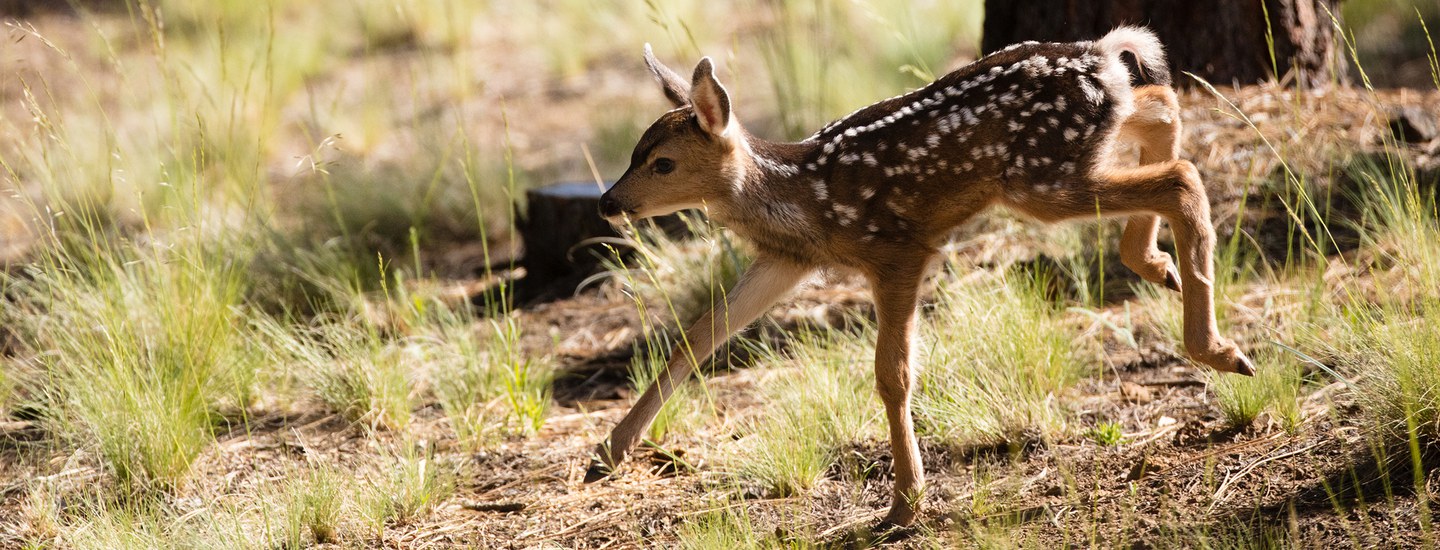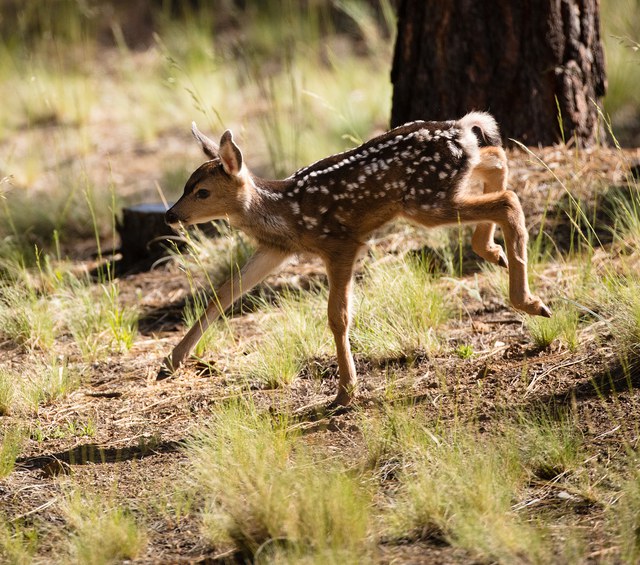The Land Trust recently partnered with Wild Side Rehabilitation, Inc. on their orphan fawn release program in Central Oregon. As part of the last step in the process, Wild Side Rehab released eight fawns at Rimrock Ranch in late September of this year.
The orphan fawn release program starts in the spring. Typically beginning in May, Robin Gold and Sandy Thompson of Wild Side Rehab start receiving calls from concerned community members. Most of these calls are from people who mistakenly think they have come across a fawn that’s been abandoned by its mother. As licensed wildlife rehabilitators that are authorized to rehabilitate mammals, Robin and Sandy are knowledgeable about how deer act and care for their fawns.
When fawns are born, they have wobbly legs and need a few days to a week before they’re able to move around. During this time when they are so vulnerable, does will leave the fawns by themselves, hidden from predators. The doe will regularly return to the fawn in order to nurse, then leave again to forage for food. When someone comes across the hidden fawn, it is often mistakenly thought to be an abandoned fawn.
After Robin and Sandy learn more about what’s being reported, they’re able to determine if the fawn truly is orphaned. Signs of this include a fawn being next to a dead doe, a fawn wandering around and “screaming,” or a fawn that has ears that are curled back (a sign of dehydration).
Once the orphaned fawns are stable, they are moved to an outdoor, predator-safe enclosure during the day and returned to the nursery pen at night. A bottle board is used so the fawns are able to feed without being held by humans. This is an essential step in the prevention of imprinting or habituation.
After 2-3 weeks, the fawns are usually reliably eating from the bottle board. Then, they are transferred to a pre-release enclosure where they are gradually weaned. Their last bottles are given around September 1st. Around this time, a horse trailer is moved into the pen and the fawns’ food is located in the trailer. This helps them become comfortable around the trailer, so that on release day, they don’t panic being in the trailer.
When the fawns arrived at Rimrock Ranch in the horse trailer this year, Robin and Sandy opened the gate to the trailer and the fawns ran out to their new habitat. Robin and Sandy walked around for a short time until the fawns realized they were free to roam about. The fawns then took off, quickly camouflaged by the golden meadow grasses. Since deer are herd animals, the fawns are likely to stay somewhat together until they gradually move on to other herds and locations in Central Oregon.
Robin Gold and Sandy Thompson are both permitted by the Oregon Department of Fish and Wildlife to care for sick, injured, and truly orphaned wildlife.


